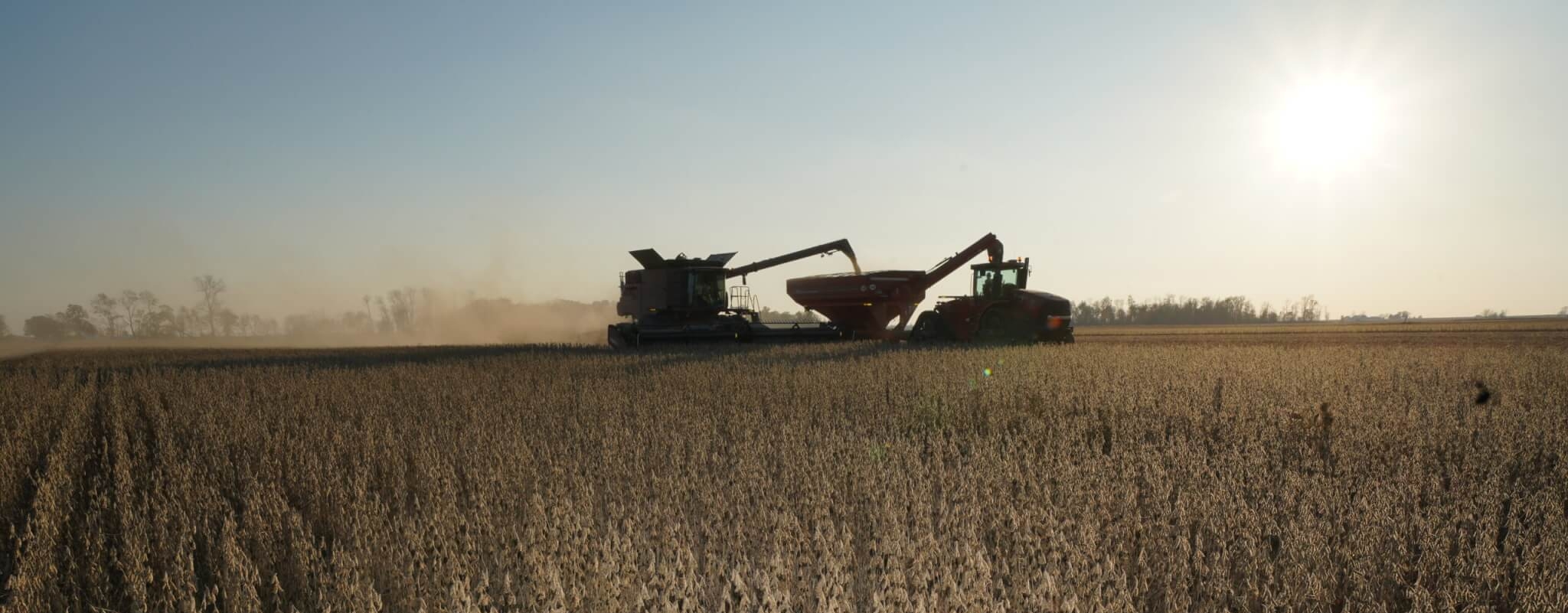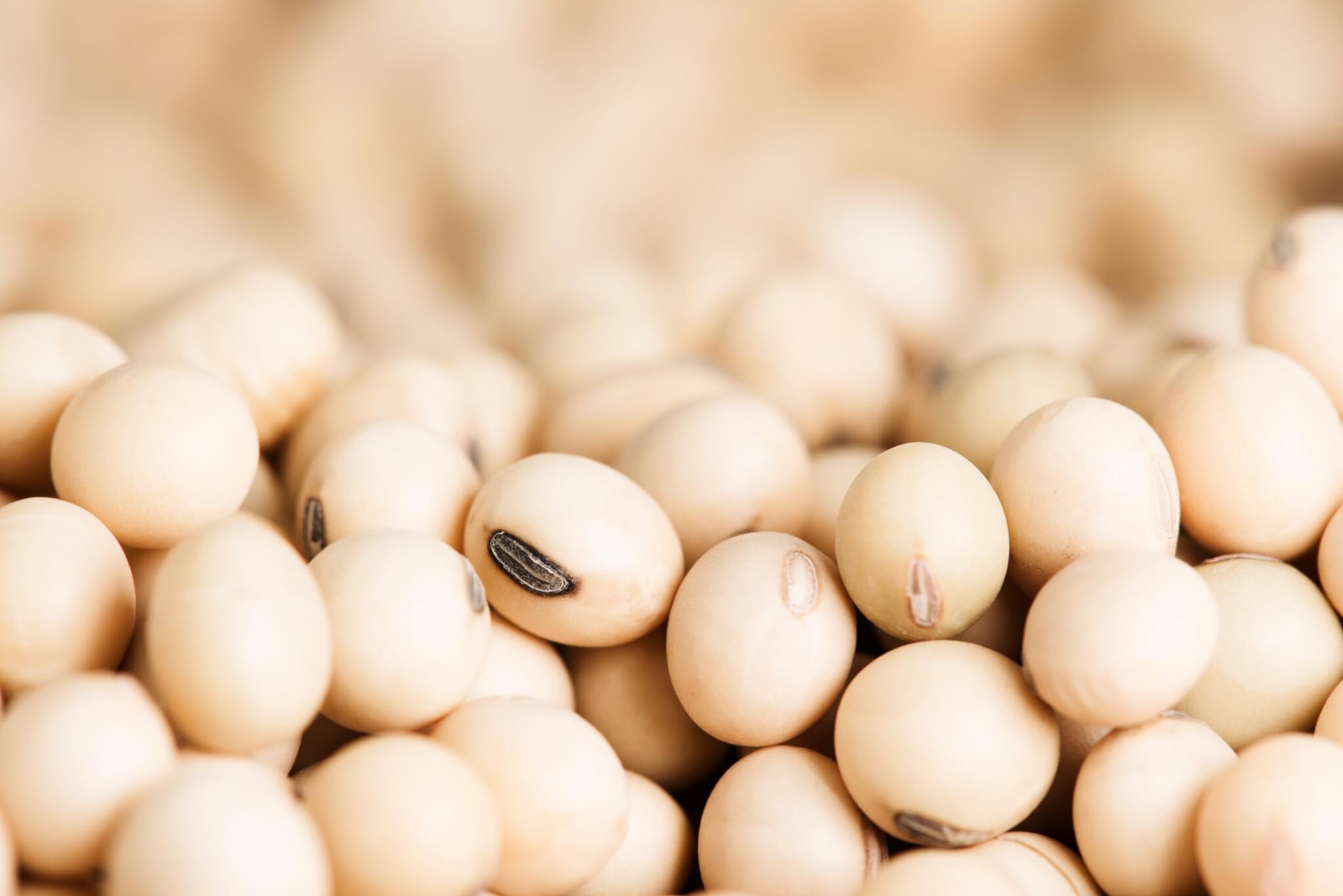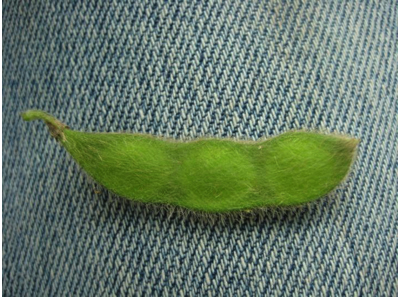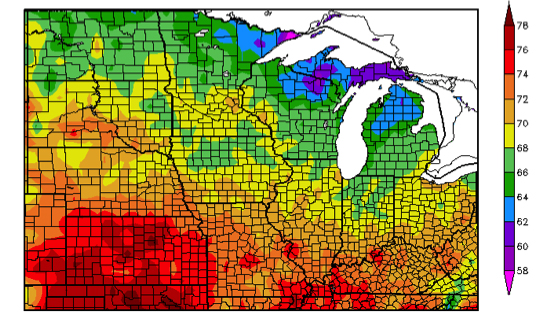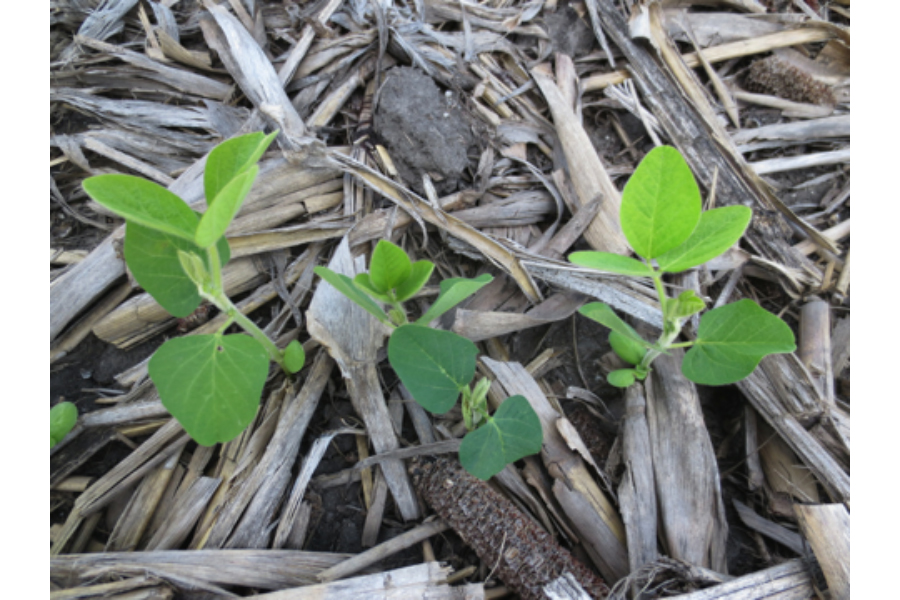Need to Plant Soybeans Still?
Spring warm-up and field dry-out has been erratic this planting season of 2014. Cold and wet conditions plagued much of our planting season. We have been able to catch a few good periods to plant as the roller coaster rose for temperatures and dropped for rainfall. Just like any good roller coaster, the rise of temperatures peaked so it could plummet downward while the intensity and frequency of rain skyrocketed. All this occurred in our typically prime planting weeks. Many areas caught up and planted soybeans (some finished while others just started) during the week of Memorial Day. Indiana only had a third of its soybeans planted by May 18, but over the course of the following two weeks nearly 50% of the crop was planted (in total 81% planted as of June 1st, USDA-NASS 2014). We are looking pretty fair at the state level as we near the 5-year average, though 3 of the last 5 years have been late plantings (Figure 1).
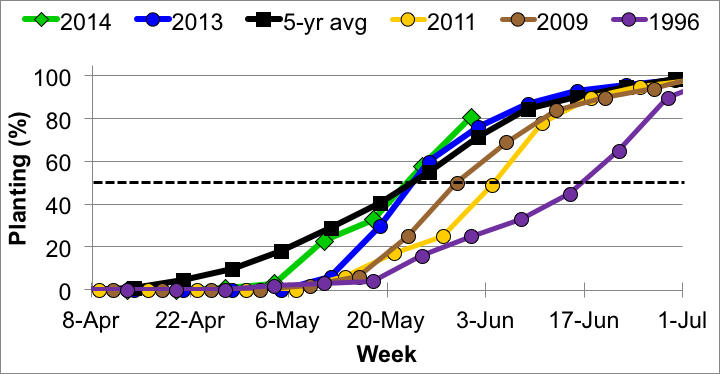
Many areas still need to plant soybeans for the first time while others may need to replant based on the large amount of rain in the past few days. We need set the stage for the best possible return on late plantings of soybean. If you are in the situation of planting soybeans in June, you need to consider your seeding rates, row width, and maturity group. Soybeans trip their reproductive trigger (flowering) as the day length shortens, which occurs much quicker with delayed plantings.
SEEDING RATE – Planting in the first weeks of June require 10 to 20% increase in seeding rates to facilitate quicker row closure and higher pod height with fewer days to flowering. Increased seeding rates will also be needed in those fields that have heavy corn residue, which has been prevalent this planting season due to limited breakdown over the winter. For instance if you typically plant 140,000 seeds/acre in 15-inch rows, you need to bump the seeding rate to ~155,000 seeds/acre in the first week of June then to ~170,000 seeds/acre in the second week of June, so forth and so on. Soybeans will produce fewer main-stem nodes (attachment points of trifoliates and ultimately pods) as planting is delayed, so the increasing seeding rates will also help to overcome the shortfall in node production.
ROW WIDTH – If you plant 30-inch rows, you need to look into the possibility of planting narrower rows with the limited time to flowering. We typically see a yield advantage of 5 to 10% for soybeans planted in narrow rows (15 inches or less) compared to 30-inch rows, and this difference will be even more prominent in late planting situations. Wide rows (30-inch) take nearly 25 days longer and 40 days longer to canopy compared to 15-inch and 7.5-inch rows, respectively. This delay will certainly decrease the yield potential as canopy closure would occur well after reproductive initiation.
MATURITY GROUP – Full-season varieties for your respective regions should be planted until June 15 for the northern quarter, June 20 for the central half, and June 25 for the southern quarter of Indiana. Varieties should be dropped a half maturity group after these dates and planted for another two weeks before we consider other alternatives. If you are in a very late planting situation, I suggest back-dating 90 days from the typical fall freeze in your region to determine if you have enough growing season to mature a soybean crop. My hope is that you will not need to make that determination.
| Action | Northern IN | Central IN | Southern IN |
| Stay the course until: | June 15 | June 20 | June 25 |
| Then, drop 1/2 maturity group and plan until: | June 30 | July 5 | July 10 |
References
USDA-NASS. 2014. Crop Progress and Condition. USDA, National Agricultural Statistics Service.
